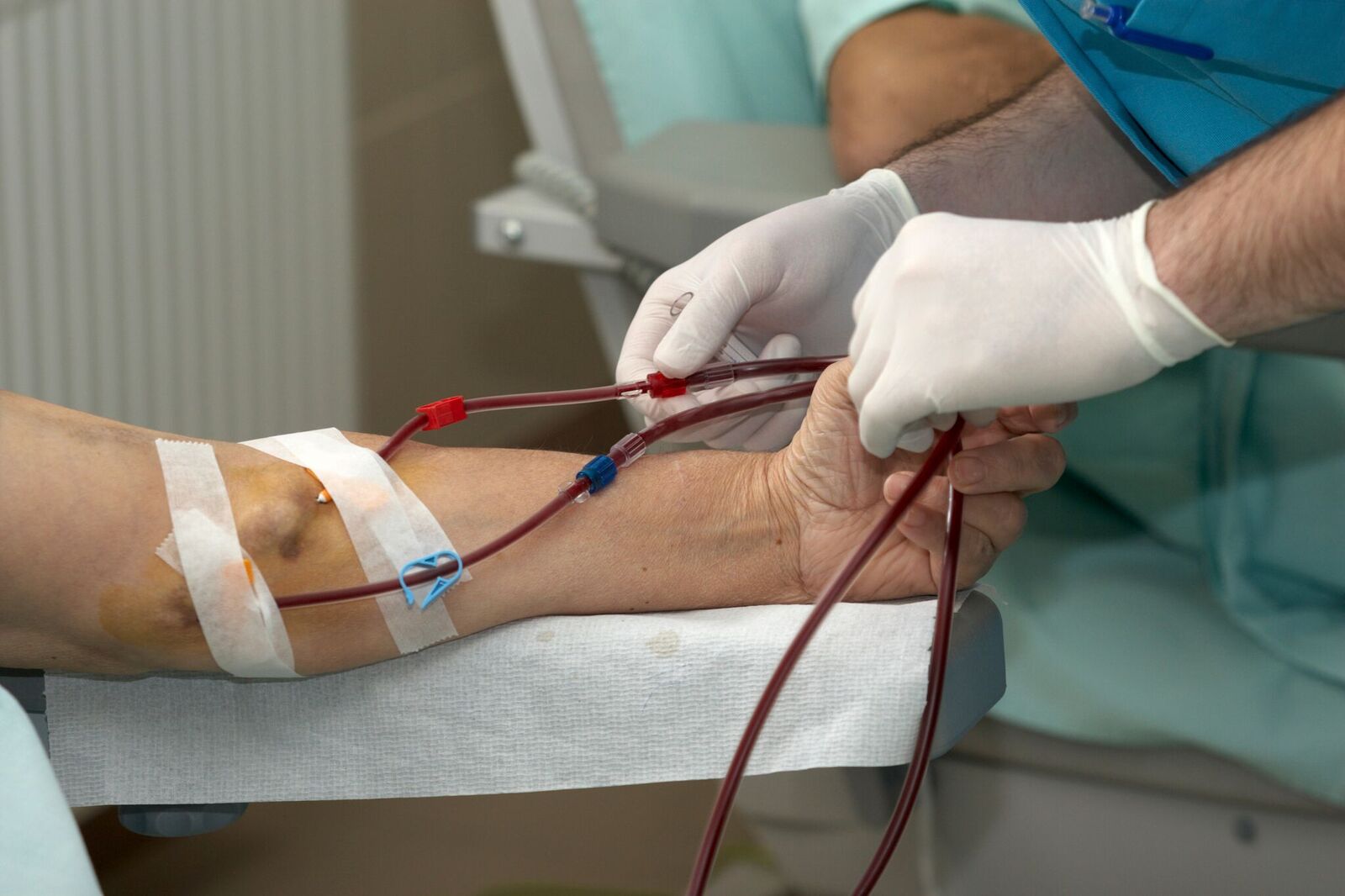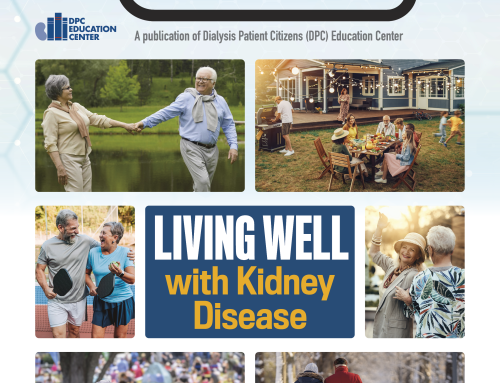(The Care and Feeding of Your Dialysis Access)
By Dr. Steve Curtiss
Problems with dialysis access are a leading cause of complications and hospitalizations of patients with kidney disease. The more patients understand about their access, the more they are empowered and can become an important part of the healthcare team, which leads to an improved quality of life by staying out of the hospital and having efficient dialysis. It is also important for patients not yet on dialysis to understand the types of dialysis access available so they can be prepared and make informed choices about dialysis access when they are not in crisis. This also helps to prevent starting on dialysis with a catheter as an emergency procedure.
An Arteriovenous fistula (AV) is the preferred type of access. A superficial vein in the arm is sewn to an artery and the vein enlarges over period of about six weeks until the patient can be attached to the dialysis machine by placing needles in the vein. This is the best type of access in terms of working the longest and having the least complications. Unfortunately not everyone’s veins are good enough to have an AV fistula. Some patients will have an AV graft where a special Teflon tube is used as a bridge between an artery and vein under the skin. This can be used for dialysis in about two to three weeks or less, but may not continue working as long as a fistula. Sometimes a patient requires a catheter to be placed in one of the large veins in the neck if dialysis is needed more urgently. This type of access is associated with a high rate of infections and should be avoided unless absolutely necessary.
There are several steps a patient can take to insure a well-functioning dialysis access and prevent complications and hospitalization. They are important for both patients on dialysis and those that have not yet started dialysis:
1) The key to a successful access is giving the surgeon good veins to work with. It is essential that any patient being considered for dialysis only have blood draws and IVs in one arm and save the other arm for an access. You want to save your non-dominant arm (the one you do not use for eating and writing to use for a vascular access.
2) The patient should feel the access every day and, if possible, listen with a stethoscope to make sure the blood is still flowing through the vein. They need to be aware of signs of a poorly functioning access such as prolonged bleeding from needle holes, arm swelling, cannulation difficulties (trouble putting the needles in) or inability to complete a treatment. Any concerns should be brought to the attention of their dialysis providers immediately.
3) Sores and ulcerations or scabs over an access can lead to infection and/or excessive bleeding. The access surgeon or nephrologist should be notified immediately.
4) Access maintenance is an ongoing process. The relationship with your access surgeon is a long term relationship and begins not ends with the creation of the access.




